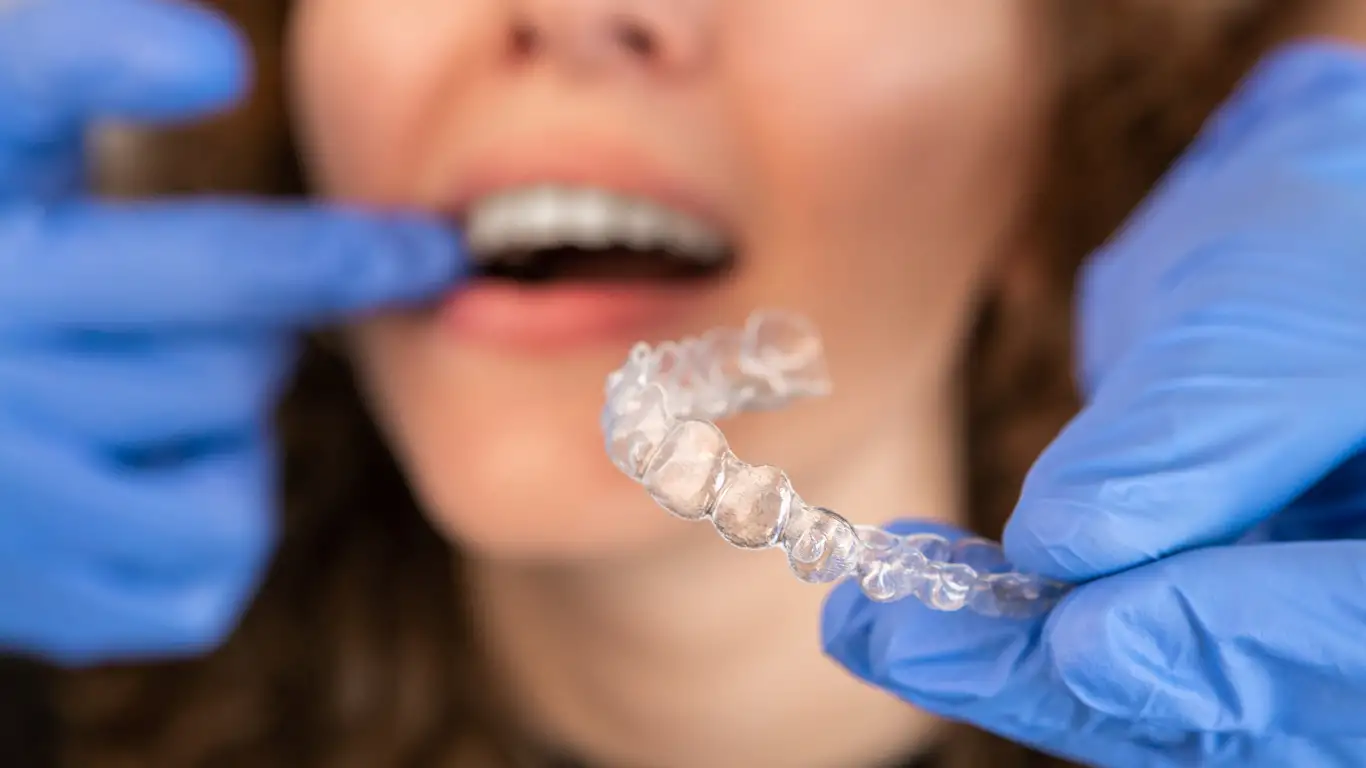Comparing Invisalign and Traditional Braces: Key Differences
When it comes to straightening teeth and improving smiles, two popular options stand out: Invisalign and traditional braces. Both treatments have their unique advantages and considerations, making the choice between them a significant decision for those seeking orthodontic care. This article will explore the key differences between Invisalign and traditional braces, helping you understand which option might be best suited for your dental needs.

What are the main differences between Invisalign and traditional braces?
Invisalign and traditional braces differ significantly in their approach to teeth straightening. Traditional braces consist of metal brackets affixed to the teeth, connected by wires that are periodically tightened to gradually move teeth into the desired position. On the other hand, Invisalign uses a series of clear, removable aligners custom-made for each patient. These aligners are changed every couple of weeks, progressively shifting teeth into alignment.
The most noticeable difference is appearance. Traditional braces are highly visible, while Invisalign aligners are nearly invisible, offering a more discreet treatment option. Additionally, Invisalign aligners can be removed for eating and cleaning, whereas traditional braces are permanently fixed until treatment is complete.
What are the benefits of choosing Invisalign?
Invisalign offers several advantages that make it an attractive option for many patients. The primary benefit is aesthetics; the clear aligners are virtually invisible, allowing users to straighten their teeth without the noticeable appearance of metal braces. This can be particularly appealing for adults and teenagers who may feel self-conscious about wearing traditional braces.
Another significant benefit is the removability of Invisalign aligners. This feature allows for easier maintenance of oral hygiene, as patients can brush and floss normally without navigating around brackets and wires. It also means there are no food restrictions, as aligners can be removed during meals.
Comfort is another advantage of Invisalign. The smooth plastic aligners are generally considered more comfortable than the metal components of traditional braces, which can sometimes cause irritation to the inside of the mouth.
What traditional braces options are available?
While metal braces are the most common type of traditional braces, there are several other options available:
-
Ceramic braces: These function similarly to metal braces but use clear or tooth-colored brackets, making them less noticeable.
-
Lingual braces: These braces are placed on the back of the teeth, facing the tongue, making them invisible from the front.
-
Self-ligating braces: These use a specialized clip instead of elastic bands to hold the wire in place, potentially reducing the number of adjustments needed.
-
Clear aligners: While not technically “braces,” some orthodontists offer clear aligner systems similar to Invisalign as an alternative to traditional braces.
Each of these options has its own set of pros and cons, and the best choice depends on individual needs, preferences, and the specific dental issues being addressed.
How do treatment times compare between Invisalign and traditional braces?
Treatment duration can vary significantly depending on the individual case. Generally, traditional braces are worn for about 18 to 24 months, while Invisalign treatment typically lasts between 12 to 18 months. However, these timeframes can be shorter or longer based on the complexity of the dental issues being corrected.
It’s important to note that the effectiveness of Invisalign heavily depends on patient compliance. Since the aligners are removable, they must be worn for 20 to 22 hours per day to achieve optimal results. Traditional braces, being fixed in place, don’t require this level of patient responsibility.
What are the cost differences between Invisalign and traditional braces?
The cost of orthodontic treatment can vary widely depending on factors such as the complexity of the case, geographic location, and the individual provider. However, here’s a general comparison of costs:
| Treatment Type | Average Cost Range | Potential Additional Costs |
|---|---|---|
| Traditional Metal Braces | $3,000 - $7,000 | Retainers, replacement wires |
| Invisalign | $3,000 - $8,000 | Replacement aligners, refinements |
| Ceramic Braces | $4,000 - $8,000 | Retainers, replacement brackets |
| Lingual Braces | $8,000 - $10,000 | Specialized adjustments |
Prices, rates, or cost estimates mentioned in this article are based on the latest available information but may change over time. Independent research is advised before making financial decisions.
It’s worth noting that many dental insurance plans that cover orthodontics will provide coverage for both traditional braces and Invisalign. However, coverage amounts can vary, so it’s essential to check with your insurance provider for specific details.
Which option is best for complex dental issues?
While Invisalign technology has advanced significantly and can now treat a wide range of orthodontic issues, traditional braces are still generally considered more effective for complex cases. Traditional braces allow for more precise control over tooth movement, making them better suited for severe overcrowding, large gaps, or significant bite issues.
Invisalign may be limited in its ability to rotate teeth or move them vertically. In contrast, traditional braces can apply force in multiple directions simultaneously, addressing more complex alignment problems. However, for mild to moderate cases, Invisalign can often achieve results comparable to traditional braces.
In conclusion, both Invisalign and traditional braces offer effective solutions for straightening teeth and improving smiles. The choice between the two depends on factors such as the complexity of your dental issues, your lifestyle preferences, and your budget. Consulting with an experienced orthodontist is crucial in determining which option is best suited for your individual needs and goals.
This article is for informational purposes only and should not be considered medical advice. Please consult a qualified healthcare professional for personalized guidance and treatment.




